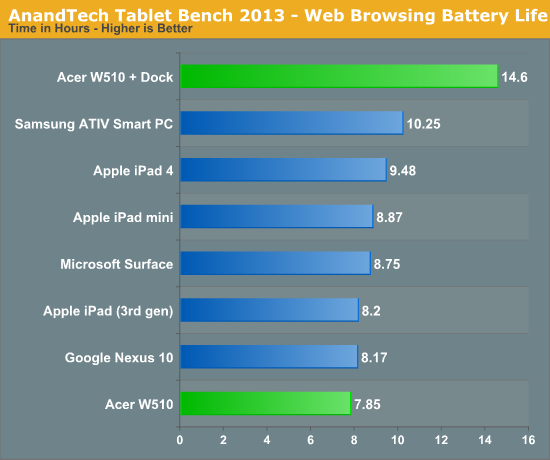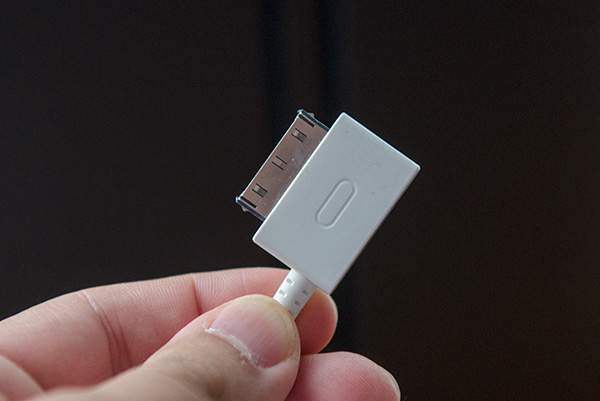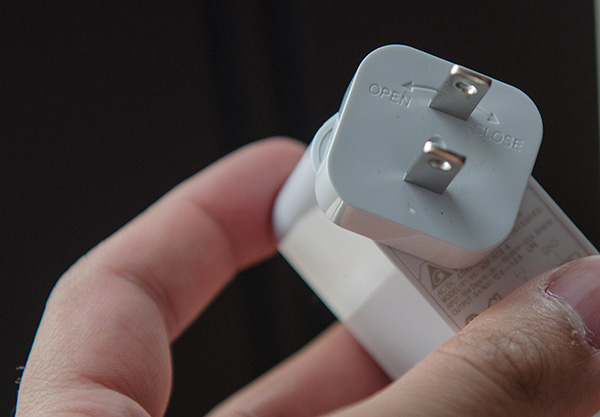The Clover Trail (Atom Z2760) Review: Acer's W510 Tested
by Anand Lal Shimpi on December 20, 2012 10:34 AM ESTCharging, Battery Life & Dock Power
Both the W510 and its optional dock feature integrated 27Wh batteries. As a result, with the dock attached you can expect a near doubling in battery life. It’s not an outright doubling because the dock itself obviously draws some power.
With the dock attached Windows 8 recognizes both batteries and displays individual charge details in desktop mode:

Battery 1 is the W510 tablet, Battery 2 is the dock
The lock screen displays the combined charge percentage across both batteries to keep things simple.
Similar to how things worked with ASUS’ Transformer series under Android, the dock is used to charge the tablet’s battery. Only once the dock’s charge is depleted will the W510’s internal battery start to drain, at which point it will power both the tablet and the dock.
As is the norm with most modern tablets, the W510 introduces Acer’s own proprietary power connector. The connector itself is reminiscent of similar connectors from Apple (prior to Lightning), ASUS and Samsung. Both the tablet and the optional dock feature a power input so you can charge the system regardless of whether or not it’s docked. The same power connector is used to connect the tablet and dock so it functions for both power and data delivery.
Acer bundles an 18W power adapter with the W510. The power adapter itself isn’t anything remarkable, however Acer did use a nifty removable plug that easily twists on/off. The W510 only ships with the plug for whatever region you purchased it in so I’m not sure how useful this feature is, but it’s nice to see design innovation from Acer here.
Charge time on the W510 is pretty reasonable for a 10-inch tablet. I clocked in a full charge from 0% with the tablet off at 3.632 hours. Peak power draw during the charge was 16.74W at the wall.
Note that this is just how long it takes to charge the W510 itself. The dock contains another 27Wh battery which should roughly double charge time.
Intel’s Atom Z2760 inside the W510 is passively cooled, but under load the upper right corner of the tablet can get fairly warm. I measured a max surface temperature of 38.2C under a heavy CPU load.
Battery Life
We've started running our new smartphone web browsing battery life test on tablets as well. If you missed its introduction in our iPhone 5 review, here's a bit about the new test:
We regularly load web pages at a fixed interval until the battery dies (all displays are calibrated to 200 nits as always). The differences between this test and our previous one boil down to the amount of network activity and CPU load.
On the network side, we've done a lot more to prevent aggressive browser caching of our web pages. Some caching is important otherwise you end up with a baseband/WiFi test, but it's clear what we had previously wasn't working. Brian made sure that despite the increased network load, the baseband/WiFi still have the opportunity to enter their idle states during the course of the benchmark.
We also increased CPU workload along two vectors: we decreased pause time between web page loads and we shifted to full desktop web pages, some of which are very js heavy. The end result is a CPU usage profile that mimics constant, heavy usage beyond just web browsing. Everything you do on your device ends up causing CPU usage peaks - opening applications, navigating around the OS and of course using apps themselves. Our 5th generation web browsing battery life test should map well to more types of mobile usage, not just idle content consumption of data from web pages.

With only a 27Wh battery, the W510 delivers our shortest runtime in our new test thus far. Normalizing for battery capacity however and the W510 looks quite competitive. Note the huge advantage that Samsung's Clover Trail tablet enjoys here however. I suspect there's something more than just a smaller battery holding the W510 back. Running the same test with the dock attached increases battery life by 86%.
Our video playback test remains unchanged from previous tablet reviews. Here I'm playing a 4Mbps H.264 High Profile 720p rip I made of the Harry Potter 8 Blu-ray. The full movie plays through and is looped until the battery dies. Once again, the displays are calibrated to 200 nits:

Video playback battery life is a similar story. Equipped with a fairly small battery for its screen size, the W510 weighs in at just under 9 hours of continuous playback. Samsung's 30Wh Clover Trail based ATIV Smart PC does much better by comparison.













104 Comments
View All Comments
MonkeyPaw - Friday, December 21, 2012 - link
I sampled the 32GB version not long ago.There was no recovery partition (they give you 4 DVDs), but when it's all said and done, about half the space is consumed by the base install. Once you add a modest selection of media and a few MS apps (which can be rather large), you are looking at a few GB of free space remaining.skiboysteve - Friday, December 21, 2012 - link
Do people really need the installed paid for versions of office? The free online web apps are completely amazing. Way way better than google docs... They are just about full versions of office. Only thing I could think of is for airplane tripszeo - Monday, December 31, 2012 - link
Only the RT version has Office included by default, and it's the more basic Home and Student 2013 RT version, regular W8 depends on the system maker as to whether a copy of Office will be included or not... Like, I believe, Lenovo offers full Office with the Lenovo Thinkpad Tablet 2 for example.RT though is a bit stripped down from W8 and so is a bit smaller install than regular W8/Pro, even with Office included.
Regular W8 tablets though are suppose to start with 64GB drives, they just offer 32GB for lower entry price point and it's only the RT tablets that are suppose to start with 32GB.
This is mainly due to the pricing structure used by most tablet makers, most charge for capacity even though the actual capacity doesn't cost the price difference. Like the $249 Nexus 7 doesn't cost $50 more than the $199 Nexus 7 to add that extra capacity, but this is how they improve their profit margins when offering higher specs and can afford to lower profit margins for the lower spec versions.
All Windows tablets though should offer Micro/SD, though for now you can't install apps anywhere but the main drive but you can put just about everything else on the memory card for extra capacity.
While higher end tablets should offer drives up to 128GB and some will offer hard drives in the docks, like the Asus Vivo Book has a 500GB HDD in the keyboard dock.
CaptchaIsEvil - Friday, December 21, 2012 - link
So this is what it's like to depend on far flung "OEMs" to build a product that will attract an audience.MS is depending on OEMs who use weak drivers resulting in poor user experience and that build substandard hardware.
Just like with Android, Samsung will be the only OEM to step up to the plate and dedicate the resources to compete in the big leagues. It won't be Acer and it won't be the commoditizers at HP or DELL (parts bin assemblers).
MS better hope it happens soon.
zeo - Monday, December 31, 2012 - link
Weak drivers are a issue, but Intel will be moving back to a GMA based on their own technology instead of Imagination's with the 22nm ATOM updates.There may still be some driver issues but support for their own hardware is much better and we'll see a return of full 64bit and Linux support.
The actual GMA is suppose to be based on the Ivy Bridge HD4000, just scaled down from 16 execution units to 4, and that should mean better developed drivers from the start as well.
It'll just be either late Q3 or around Q4 2013 until we see products based on the update start to come out.
nofumble62 - Friday, December 21, 2012 - link
fast, run everything, and have lot of storage.Tablet is a fad, and will fade away.
kyuu - Friday, December 21, 2012 - link
How's the weather over there in Denial Land?nofumble62 - Friday, December 21, 2012 - link
Great- warm and toasty over my i7-3770.In the drawer, there is an iPad3 and a Kindle Fire. They are nice to play with for a short while, but I am now back to my 24" IPS and keyboards.
aliasfox - Sunday, December 23, 2012 - link
And here's the alternate scenario: I'm on my iPad1 At my parents' house, and after the second day of regular use I'm still at 42% battery life, and I'm doing the same thing as you, commenting on a forum.Is it slow as heck? Yes. Is it useful for a whole lot besides for web surfing, videos, and short writing like this? No, not really. Is web surfing, videos, and short writing like this a significant portion of my daily web life? Yes. Do I appreciate the fact that I can get two and a half days of usable battery life in a package about half the weight of an ultrabook? Absolutely. Have regretted I buying and using this for the past two and a half years? Aside from abysmal resale value, not at all.
My Mac Pro doesn't get much use besides for Netflix watching on my TV, so for my usage scenario, I'm cool with a tablet. I'll throw in shipping cost if you want to send me your iPad3 though, I'll give it a good home.
Death666Angel - Saturday, December 22, 2012 - link
Hey!Good article. Just wanted to say that the charger connector is pretty much similar (the same?) my Travelmate 8172 has (just in white whereas mine is in black). On that charger, I can use it to set the orientation of the charger, it helps in crowded sockets. And guess it might save Acer a few cents of cost. Anyway, I like it a lot. :D